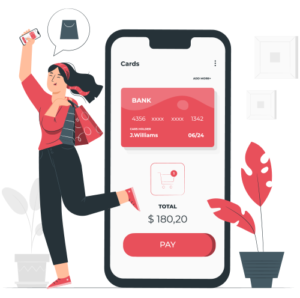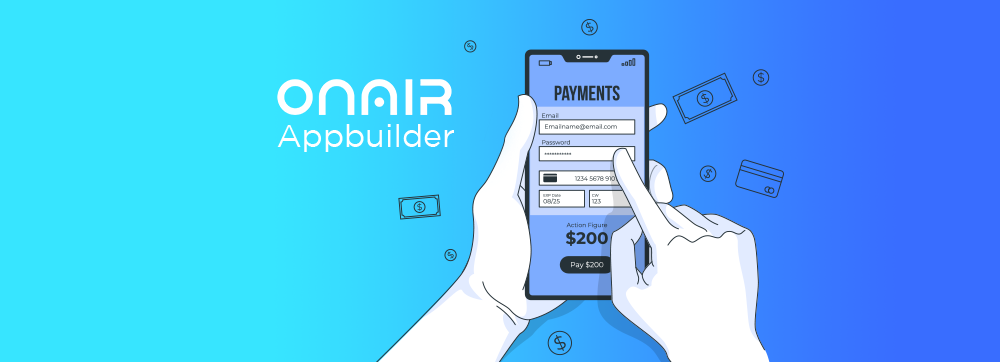In this technology era, online buying has become an important part of our daily life. Ten years back, people were a little skeptical about online payment, online shopping, or everything that has to do with online. But today, 8 out of 10 people are using the payment gateway to do the transaction on daily basis. And this is the motivation for integrating payment channels into mobile apps. Thanks to the function of payment system gateways.
We are moving towards a cashless future, away from the annoyances of a type of transaction that involves complications such as storage issues, overhead costs, and a slower shopping experience.
Instead, mobile payment systems such as Google play, apple play, and pay-pal are leading the way when it comes to simple and secured online transactions. According to reports, the transaction value of mobile payment apps will reach approximately 14 trillion dollars by 2022, demonstrating the industry’s rapid growth.
Defining payment gateway in mobile apps
Previously, the transaction was all about hard cash, then a few years back people started trusting credit and debit cards. Today we have options such as net banking and online payment systems. All this is possible because of integrating payment channels into our mobile apps. In mobile apps, if someone has to make a purchase, these payment gateways are the choices. However, a payment system/processor is involved in this method as a mediator between the transactions that the user wants to do with the financial institution and the transaction that the user wants to do with financial institutions.
Transaction types supported by Payment gateways
1. Authorization transaction
An authorization transaction that determines whether the customer has the funds to pay. It does not include the money transfer itself. Instead, it is just a verification process where the merchant verifies if the cardholder or person is responsible for ordered items.
2. Capture
The actual execution of previously authorized payment that results in the fund being remitted to the business account is known as capture.
3. Sale
A sale is a transition that combines authorization & capture. Before a cardholder can use the card, they must be authorized. The funds may or may not be seized at that point. It’s a standard payment method for one-time purchases such as subscriptions or e-tickets.

4. Refund
The outcome of a cancelled order, for which the merchant must use refund payment processing to repay the funds.
5. Void
Identical to refund, but only possible if money hasn’t been captured.
Integration of payment gateway in mobile apps
Several steps occur during the payment gateway process. The success of a transaction is determined by how successfully customers, merchants, banks, and service providers interact. Gateways are acting out as a link and carrying out all the stages for payment.
- By clicking the buy button and submitting the needed information, a buyer confirms the purchase.
- The payment gateway receives the transaction data in encrypted form.
- Then this information is sent to the merchant’s procuring bank’s payment system.
- Then system provides transaction details to the card association, which might approve or deny the transaction.
- The payment service delivers a response to the gateway after verifying the request.
- Finally, gateways pass it to the merchant, who will finalize the transaction and execute the order.
Payment gateway integration in android or iOS means businesses may collect payments quickly and fast. Payment gateway compliance and cost are something worth mentioning.
Compliance with payment gateways
Every firm needs PCI DSS to conduct financial transactions. Credit card protection and maintenance of a secure digital ecosystem are the main focus of these security regulations. The compliance ensures that no transfer of data happens till the user mandates the same. Merchant and service providers both are responsible for:
- Creating a secure network and keeping it up to date.
- Data protection for cardholders.
- Assuring a high level of access control.
- Management of vulnerabilities.
- Test security systems on regular basis.
- Develop information security policies.
Benefits of payment gateways in mobile
- Allow your customers to choose when and how they want to get what they want. Most of your transactions will be covered if you use the payment gateways like MasterCard and visa compatible.
- In addition, as an e-commerce shop, your role is to provide a variety of methods for your customers to complete secure online transactions, such as apple pay, Venmo, or PayPal.
PayPal is one of the most well-known and globally accepted online payment gateway systems. It is also a more secure and dependable method when it comes to your business. Buyers pay no transition fees, but merchants have to pay it. In PayPal, there are no startup costs, gateway fees, or monthly costs.
Mobile application payment gateway in 2021: everything you need to know
Payment gateway is the way of the future for B2B e-commerce. They play an important role in establishing a secure connection between the website and the payment processor, encrypting all payment data for reach transactions. But before selecting which payment gateway to include, your app should be fully functional. With ON AIR App Builder, create an app the way you want in 3 simple steps. Start Now!


